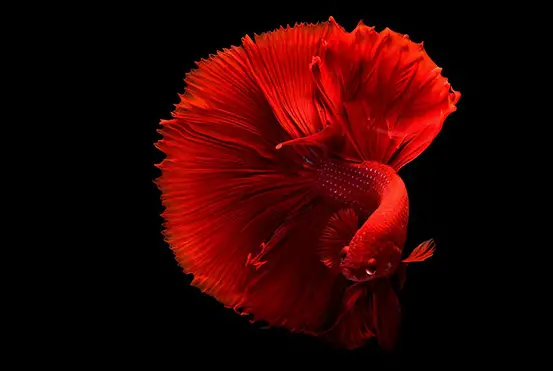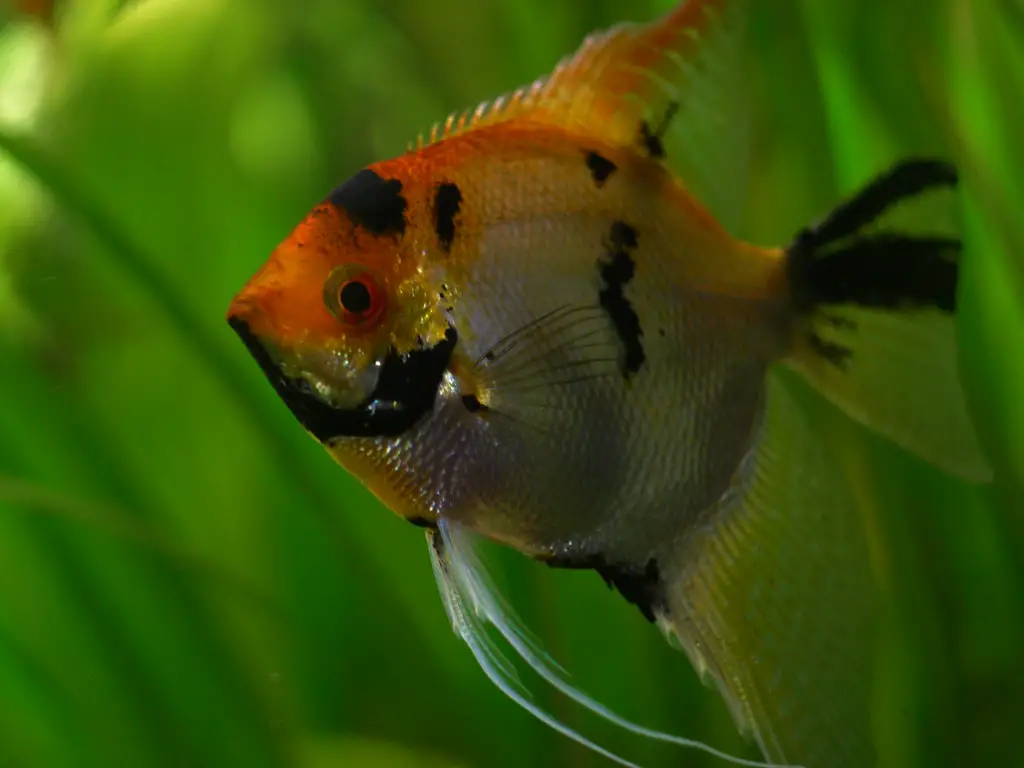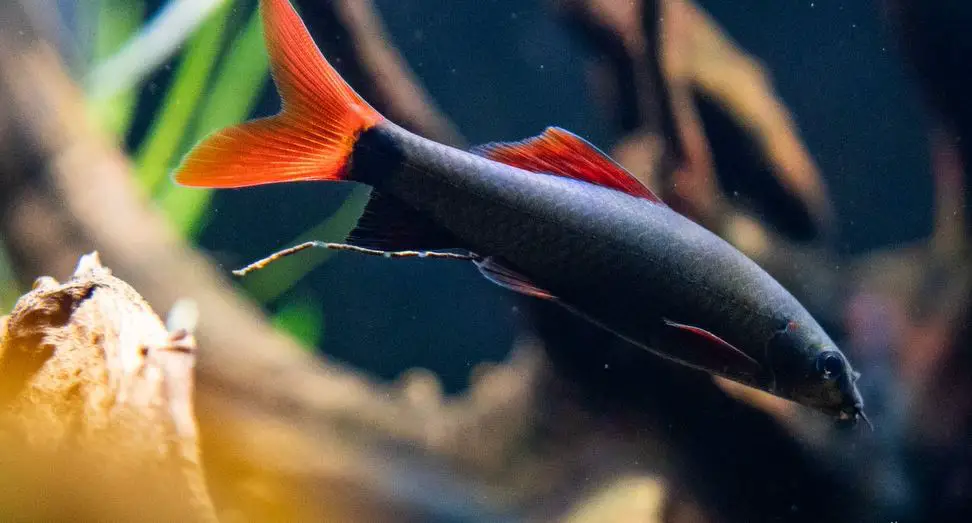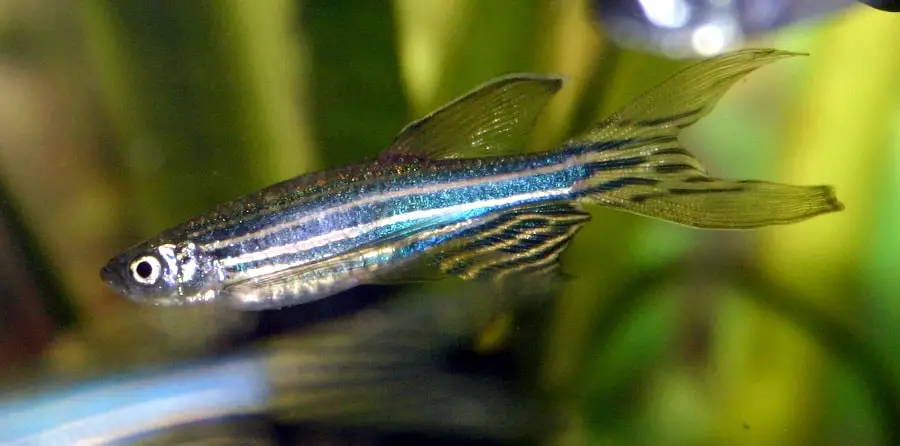The Betta Splendens is also known as a fighter or fighting fish. These fish are popular among aquarists and hobbyists due to their bright and varieties colors with different shapes of the tale, personality, and low maintenance cost. One of the interesting facts about betta fish is that there more than 70 species of betta fish around the world.

The most popular and attractive types of betta fish are:
- Half Moon Betta
- Comb Tail Betta
- Double Tail Betta
- Crown Tail Betta
- Rose Tail Betta
- Plakat Betta
- Veiltail Betta
- Dumbo Betta
- Fantail Betta
- Giant Betta
These fish are often seen swimming solo in a single container, ornamental vases or tank in both office and home. But there is a question! Can Betta live alone in an aquarium or in a small bowl? Do they enjoy staying alone?
Betta History
Betta Splendens was first discovered in Southeast Asia in mid-1800. It got its name from an ancient clan of warriors, “Bettah.” The fish name was given after the fighting fish became popular in Thailand in the mid-1800s. Back in the mid to late 1800’s betta were collected and breaded specifically for fighting. Despite many believing that Betta fights each other until one dies, that’s not always the case. Typically betta fight only lasts for a few minutes before one dies or decides to retreat.
Betta’s natural environment is in the wild, making a home in rice paddies, drainage ditches, and so on. The environment would change so often that they developed the ability to intake oxygen from both air and water. The drastic change in the environment will not affect Betta as it is labyrinth fish and can adapt to the atmosphere; this is the reason betta fish are one of the beginners fish. Also, Betta can adjust to small space and unfiltered water and do their best on small face aquarium with a regular water change. The water temperature for a betta is approximately 76-82 degrees F.
Betta Splendens Behavioral Characteristics
Most of the fish are known for traveling in a pack. However, Betta prefers to travel independently both in the wild and in captivity. Betta is not a schooling fish unless it comes to gender. Female bettas can live together in a group in a larger tank, tank at least 10-gallons in size. It enjoys its company being alone and need space to hide, for example, aquatic cave or planted corners make them feel safe.
In the wild, Betta has more places to be independent, but in captivity, this can lead to territorial matches. In captivity, betta needs at least 2-gallons with a hiding place, and plants are recommended and a regular water change. Betta is attracted to large fins and bright colors and tends to bite these types of fish and eventually to kill them.
Another behavior of Betta is that they flare their gills out, and the vertical line may appear in their body if it is frightened, threatened, to attract the opposite sex or when a male is building its bubble nest and protecting it. The vertical lines appear in a female body when female attempts to show mating readiness.
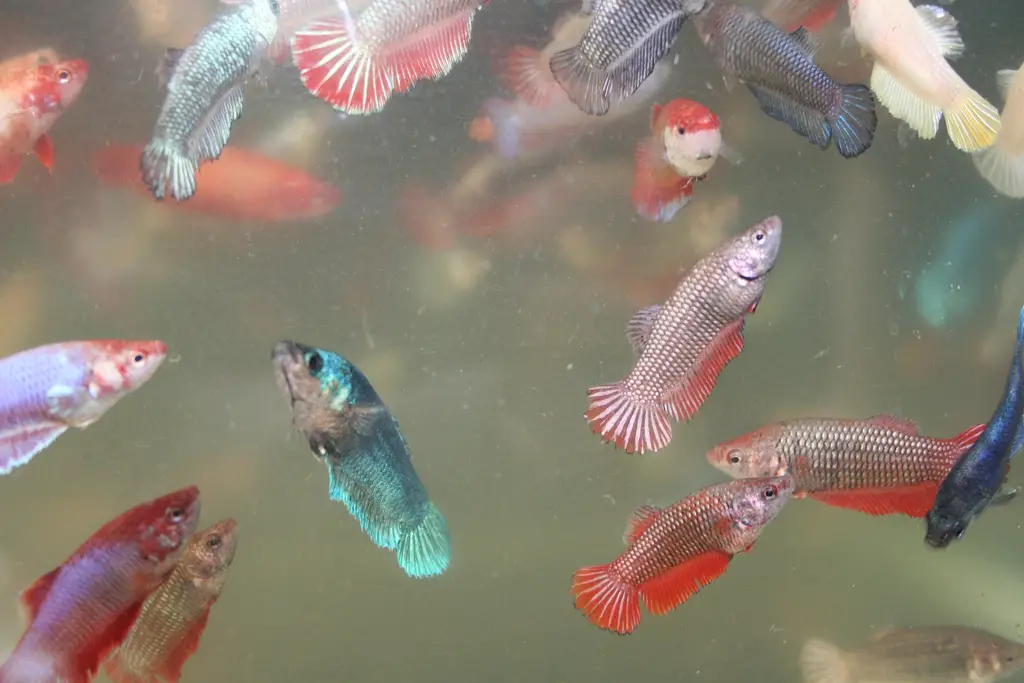
Scientific name: Betta Splendens
Origin: South East Asia
Lifespan: Average Lifespan 3 years.
Size: 1 inch (2.5 cm) – 5 inch (12.5 cm)
Temperature: 23°C/74°F – 26.5°C/80°F
pH: 6.5 – 7 range
Fish Types: veil tail, half-moon, double tail, crown tail, and so on…
Aquarium Size: Minimum of 2.5 gallons
Gender: Male, Female
Water Quality
Betta Splendens can tolerate a wide range of water conditions; they are hardy fish. Although Betta is a hardy fish, to keep them healthy and disease-free, you need to monitor your water quality. Betta prefers warm water and slightly acidic water with a pH rating of 6.5 to 7. Some of the common Betta diseases are discussed in the next article: “Betta Diseases.”
While cleaning the betta tank, you must take out the half or one-third of water and replace it with fresh and clean water. This will allow fish to adjust their temperature with the tank’s water. If there is no any filtration system in your tank, for a better environment in your tank or bowl, the water must be changed between 3 to 4 days gap. To ignore infections and germs, you may use a drop of chlorine; this will not harm any fish inside the aquarium. You must avoid soap, detergent, or any kind of reused cloth for cleaning the tank; it will infect the fish. Plain clean cloth and 2 meters of transparent pipe will help you to clean the tank and siphon out all fish waste and other debris, respectively.
Most popular freshwater tropical fish
More than 12.5 million households maintain various types of betta fish in the United States only. Represent the largest proportion of pets in the United States, and it is not surprising that they are the best option for pets.
Most of the species we will see here are easy to care for, bring beauty and color to their homes, and are very relaxing to observe.
Keeping different types of betta fish has many health benefits such as reducing stress and reducing blood pressure and as well as maintaining heart rate.
So, maximum people who start in the pastime of fishing get addicted very fast, mainly because the fish are so beautiful to see, and many have their own characteristics and unique personalities.
In this article, we are going to take a look at the most popular species, types of betta fish, available in the freshwater aquarium industry today.
What makes a betta fish beginner friendly?
The first thing you will learn about handling tropical fish (betta fish) is that each type of betta fish is different, and you cannot just throw a lot of them in a tank and feed them a couple of times a day. There is much more than that. When looking for beginner freshwater fish, you need a species that will have some properties like:
- They are resistant to a wide range of water perimeter, so they can stand more tragic conditions. We know you will treat your fish very well, but when filling up your first aquarium, it is a good idea to choose types of betta fish that can survive in less than optimal conditions, and will not be so threatened by changes in the water parameters. This gives a bit of room for maneuver and more room for mistakes.
- They are easy to care for. You are still learning, so do not choose something that needs constant care and attention.
- They are peaceful and get along well with most of the other fish. Different fish have different levels of aggression, and while some can live in peace with other fish, others do not, so it is important to choose fish that will live together as a community, and not spend time attacking and eating each other.
- They fit in your tank. Knowing the size of a certain species of types of betta fish will be crucial when populating your tank. It makes no sense to own fish that can grow up to 2 feet long if your tank is only 2 feet wide. Most of the fish on this list of this article Types of Betta Fish will stay around 2 to 3 inches, so they are perfect for the beginner aquarists.
Betta Fish Tail Types
Crowntail
Betta fish types with crown tails are a very popular option. Named due to the pointed appearance of the fins, as in the upper part of a crown.
You will recognize a crown tail due to the extended length of the fin rays and the small amount of tape. If the belt reaches more than 2/3 above the ray of the tail, it is not a crown tail. Most breeders aim for the tape to reach only half.
The tail of the crown (abbreviated to CT) is perhaps one of the types of tail easier to recognize since the reduction of the straps and the much-extended rays give the tails of the crown a very distinctive pointed appearance.
There may be double, triple, crossed, and even quadruple rays. The tails of the crown can have a full extension of 180 degrees, but less is also acceptable and, in fact, is seen more frequently.
The term “crown tail” is often abbreviated as “TC” when such fish are described.
Comb tail
Comb tail Betta fish types are similar to the tails of the crown in which the rays of the tail are longer than the strap. However, comb tails use this feature in a more subtle way. The difference between the fin ray and the belt is not so great. The tail of the comb is not really a distinct form of its own; it is more a trait that can be seen in many other forms of the queue. Commonly it consists of a caudal fin similar to a fan with a considerable extension, although normally at less than 180 degrees, where it would be considered more like a “half sun” (as detailed below).
The fins of a betta comb will have rays that extend beyond the fin membrane, giving it a slightly pointed appearance, which is said to look like a comb, but nothing too dramatic as seen in the tail of the crown then.
These types of tails can have the typical inclination of the tail of the veil, although it is not preferable.
Delta (D)
A tail of the delta begins to narrow towards the body of the Betta fish types and widens toward the tip giving it a triangular shape.
The type of delta tail is similar to a crescent fin, but the tail does not reach 180 degrees
The difference between this type of tail and the tail of the veil is that if you drew a line horizontally in the center of a Betta fish types, there would be a similar amount of tail above and below the line (The tail of the veil would have the most of the tail below the line).
Super Delta
The super delta tail type is very similar to the delta tail type; however, when it widens, it spreads even further. A super delta tail will light between 120 and 160 degrees, not reaching 180 degrees of a half-moon tail.
Short-Fin
The Betta started with short fins. These fins are still found in wild-type bettas today. Short-fin fishes have also been selectively bred to have tails formed in the “D” shape of their crescent relatives with longer fins, as well as traditional wild-type fins. Many also call these fighters, since the short fins are selectively bred to fight.
Veiltail
The Veil tail is the most common breed of Bettas. Their tails bow, then they float, like a veil; that is how they received the name ‘Veil Tail.’ Veil Tails are easily found in almost any type of betta fish store.
They are the types of betta fish that have been found in pet stores for years. The fins are long and fluid, and the tail arches up and up like a veil. Although this is probably the most popular aquarium fish of all time, this type of tail fish is not visible in IBC competitions.
Double Tail (DT)
The double-tailed Betta, also known as DT, is exactly what it looks like: it has a double tail fin.
It is worth noting that it is not a single caudal fin divided in half, but a true double tail with two caudal peduncles.
The double-tailed types of Betta fish types do not necessarily have caudal fins, even in size, but even division is extremely desirable. They also tend to have shorter bodies and broader dorsal and anal fins, which generally mirror each other more or less exactly.
Long-Fin
The three unpaired fins, the dorsal, the anal, and the caudal or the tail, have increased in length with selective breeding that is longer and smoother. This term can be used for Veiltail, the various degrees of Delta tails, and Half-moon.
Half Moon (HM) / Over Half Moon (OHM)
The caudal fin of a half-moon types of Betta fish types has a characteristic 180-degree extension, like a capital D or, as it should be, a half-moon.
Both dorsal and anal fins are also larger than average in half moon bettas.
Although they are striking and sought after, it is worth noting that this abnormally large tail can cause tearing and damage to the tail, which is often referred to as “blowing a tail.”
Half-moons are abbreviated to HM in the descriptions.
The half-moon is basically an extreme version of the half-moon. It is the same as the tail of the crescent in all but one sense: the extension, when widened, is more than 180 degrees.
Half Sun
The tail type of the half of the sun is produced by selectively reproducing the varieties of the crescent moon and the tail of the crown together.
This type has the full extent of 180 degrees of the crescent but has rays that extend beyond the caudal fin membrane, as would be seen with the tail of the crown.
That said, the rays are slightly extended, not enough to be mistaken for a crown tail.
Plakat (PK)
The plakat, or PK, for short, is short-tailed types of betta fish types, which is more closely related to the betta splendens found in nature than other varieties of Betta.
Sometimes they are confused with female bettas (which have shorter tails), but the difference is that the males have longer ventral fins, more rounded caudal fins, and well pointed anal fins.
The old-style plakat just has a short rounded, or a slightly pointed tail. However, there are now two other types of plakat thanks to selective breeding: the half-moon plakat and the plakat of the crown tail.
The half-moon plakat has a short tail but with an extension of 180 degrees like a traditional half-moon. The plakat of the tail of the crown has extended rays and a reduced network, like a normal crown tail, but once again this is with a short tail characteristic of a plakat, instead of a long tail.
Dumbo Betta Fish
Judge by name, perhaps think that how could Betta have an ear? If another type of Betta is distinguished by its caudal, dorsal and anal fins, the most distinguishable part of Dumbo Ear Betta is found in its pectoral fins.
An extra-large pectoral fin makes it look like the elephant’s ear from the front view. Sometimes, these fins can match the color of your body, but sometimes they contrast. This Betta could be accompanied by a half-moon tail, a pink tail, or a colonel’s tail.
Due to its super selective breeding program, the price of this Betta is also quite high. And, these Betta also need extra care, since these Betta are prone to collapse or damage the fin and some types of betta fish diseases.
Rose tail
The pink tail is similar to an HM or extreme crescent, so the extension of the caudal fin is 180 degrees or more. The difference is that the rays have an excessive branching; this gives a more wrinkled appearance at the end of the tail, which is said to resemble the petals with ruffles of a rose. The Rose Tail Betta was developed, trying to raise the perfect half-moon. Its fins, especially the caudal, have an excessive branching and overlap that gives it the appearance of a rose.
Feathertail
If there is a greater amount of branching than usual (even for a pink tail) that gives an even more pronounced effect, or perhaps “wrinkled end,” with a slight zigzag aspect, then this is known as a “feather tail.”
The tail of Betta feathers is very similar to the pink tail but tends to have a more wrinkled appearance.
Round Tail
The round tail is similar to a delta but is completely rounded, with no straight edges near the body that makes most of the tails have the shape of a D.
It is also similar to a basic plakat, but it is significantly longer and more complete than the characteristically short tail of the plakat.
Spade Tail
The spade tail is quite similar to a round tail, but instead of rounding the tip of the caudal fin, it reaches a single point, like the shovel in a deck of cards (albeit sideways).
The extension of a swordtail should be uniform on both sides of the tail. This betta fish is named spade tail due to the very clear blade as the aspect of the caudal fin. The tail has a wide base that then narrows gently to a point.
Double Tail Betta
The Betta Double Tail fish has two tails due to a genetic mutation.
Depending on the first type of Betta, this change can make the types of betta fish look attractive, but they are also smaller than normal and prone to many swim bladder diseases.
Not many babies survive, so you will not see them in aquariums as well as in pet stores very often.
It is not recommended to raise them with other types of Bettas because the babies could be involved from the beginning.
Comb Tail Betta
This is usually the result of a mix between a Crowntail and another type of Betta.
The Combtail has the shape of a Crowntail, but with longer and thin fins that give a new look to the tail.
You can get these types of betta fish yourself by simply crossbreeding two different types of Bettas.
The Giant Betta
Although the giant Betta is not a kind of tail, I thought I would add it anyway. As you can see by its name, the Giant Betta really is a giant size Betta. They were first bred in 1999, where a very large Betta was found. When finding another great Betta, they were raised together, and then the production of those Bettas was bred again and again until a Betta Giant line was created. Today Giant Betta can come in any of the previous types of the queue and are the same as normal Bettas, but much larger. The giant half-moon bettas are less common than the plakat giants since the giant half-moon bettas often have trouble holding a large number of fins.
Advice for beginners
For beginners, I recommend starting slowing and adding just a few types of betta fish at any one time look for fish that are hardy, that are easy to care for, and that get along with others in the tank.
For you, more forward-thinking aquarists, share your opinions on what you think is the best freshwater aquarium fish for beginners to start. I’m sure a lot of the beginners would appreciate it. This will give you a chance to get to know and understand how to care for each species of fish before you add another. Make sure you always research the species you want to buy to ensure you can give them the time and care that they require.
Interesting Facts About Betta Splendens
- Betta fish prefer warm water rather than cold,
- Betta fish suppress their immunity and make them feel ill.
- As mention above, there are more than 70 species of Betta fish with differently shaped tales, i.e., veil tail, half-moon, double tail, and crown tail,
- In a few cases, Betta lived till their teen, but normally it lives for 3 to 4 years,
- The average life expectancy of this species is 3 to 4 years of age; however, under optimal water conditions, with enough space to swim, the Betta can live up to 9 years,
- Betta fish are one of the intelligent fish,
- Betta fish are territorial and aggressive,
- Wild Betta are dull brown and green in color,
- Betta fish can breadth air through the atmosphere.
- Betta fish can survive for a short period of time out of the water until they are wet,
- Male Betta guard the bubble nest and their offspring,
- Betta build bubbles nests,
- Betta fish are not only beautiful, but they are also useful. According to Top10Zen, its fins contain nerve cells, muscles, and even taste buds!
- The male Bettas are the true “seekers” of the two, since the females are smaller with fins and body, and are a dull gray-green color,
- The winning Betta would continue to fight again and again until the opponent defeated (killed).
- The beauty of Betta is due to selective breeding. The wild-caught Bettas have smaller fins and are usually off-brown or green, with red at the bottom of their fins,
- The technical name of this fighting fish is the “plakat,” which means to tear or bite the fish,
- Depending on the species, some Betta adult male fish (the Akar) can grow up to 5 inches long (12.5 centimeters). The average length of a male Betta is 3 inches long (8 centimeters),
- Bettas tend to eat like pigs, so it is recommended to feed your pet only everything you can eat in 3 minutes, approximately twice a day. This is approximately 3 or 4 small Betta pellets or blood worms at a time,
- Freeze the brine shrimp in small ice cubes as a special gift for your types of Betta fish types. Put a bucket in your tank and observe it with this delicious surprise,
- Male Bettas will also try to fight if they see their reflections in a mirror, so make sure you do not put your bowl in front of a mirror,
- The dull-colored fins on your Betta are a good indication that your fish friend is sick,
- The Disney Channel Fish Hooks series features Milo, a Siamese fighting fish,
- Betta has been used as a background and screen saver for the Windows 7 and Windows 8 operating systems and on Iphone’s home screen.
– Sadikshya Bajracharya

